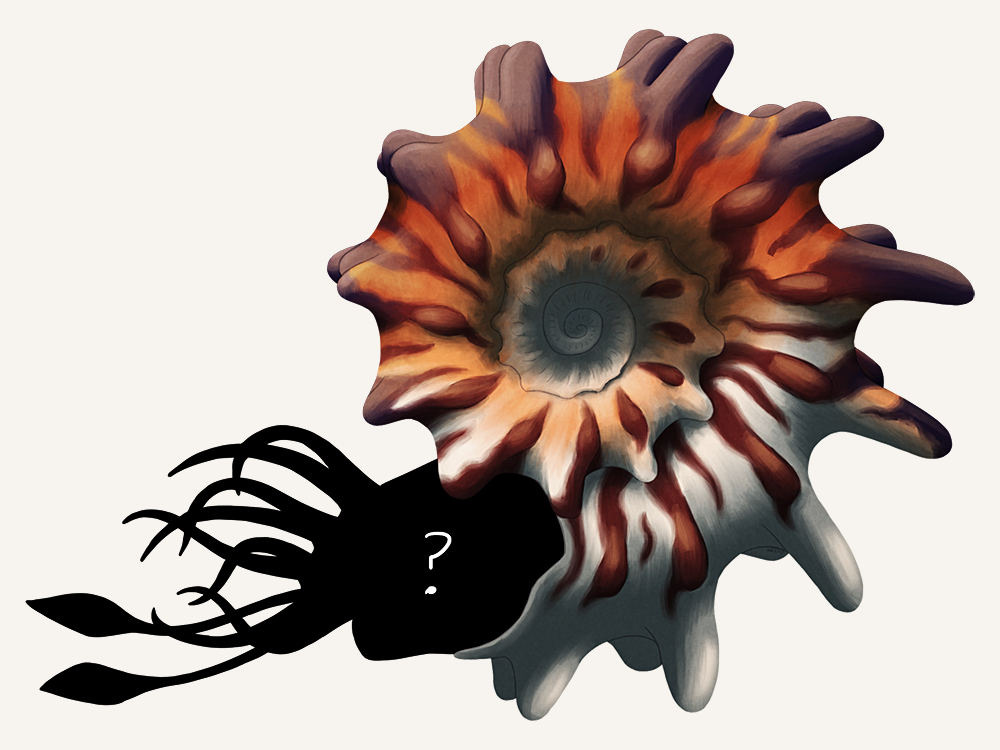Ammonites (or “ammonoids” in technical terms) are one of the most recognizable types of fossil, found in such high abundance that they’re frequently used to precisely date rock layers. They’re absolutely everywhere in fossil collections, and are even made into jewelry.
So we must already know everything we possibly could about them, right?
Except… we really don’t know what their soft parts looked like.
The fossil record for ammonite soft tissue is surprisingly empty for a group that existed for over 300 million years. A possible ink sac and a few organs have been found, but nothing else.
Based on their other cephalopod relatives, they probably had at least ten arms (the two longer tentacles shown on this Collignoniceras are a little speculative), along with a siphon for propulsion – but until we find that elusive exceptional preservation we just don’t know for sure.
[Edit: As of 2022, a few more traces of soft tissue have been found!]

